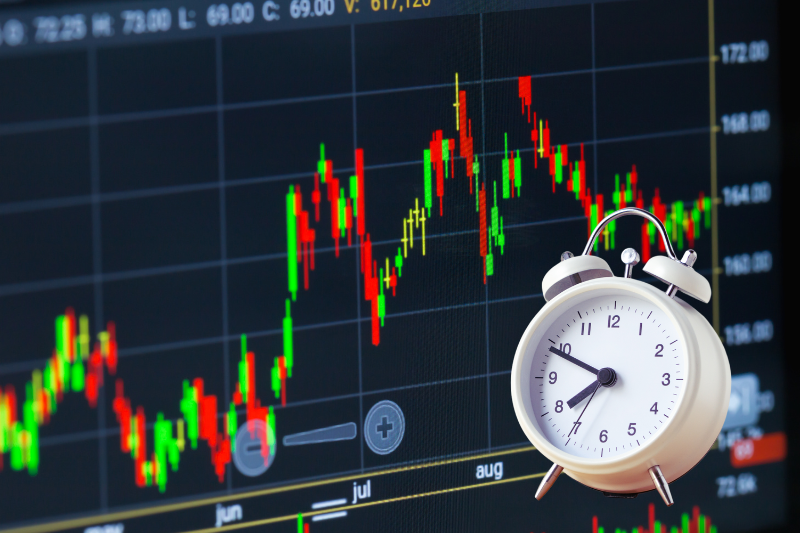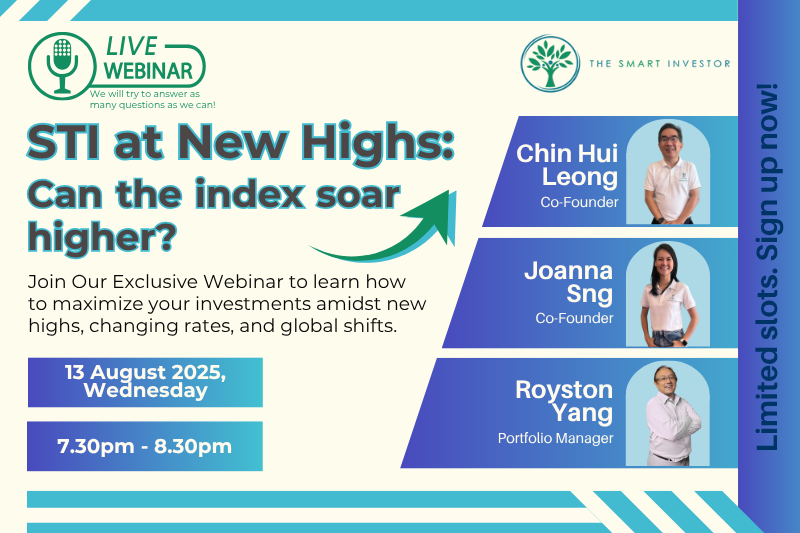I started investing in the stock market three years ago.
Like many beginners, I tried to time my purchases perfectly.
This is especially true when the stock market is at a record high; it is normal to feel anxious about buying a stock or exchange-traded fund (ETF) at a high price.
At times, I would spend months or even years waiting for a dip.
For example, I only planned to buy NVIDIA Corp (NASDAQ: NVDA) if it hit a low at US$95, and refused to buy DBS Group Holdings Ltd (SGX: D05) after it had risen to S$50 this month.
“I’ll wait for the dip,” was what I would tell myself, while sitting on a pile of spare cash, sometimes for a year or two.
What I didn’t realise is that most of the time, it often costs more to time the market than staying invested.
In this article, I would like to share why waiting for the dip could cost you more and how I will be changing my investing mindset moving forward.
Why Timing the Market Rarely Works
The idea of “buy low, sell high” is easier said than done, especially when market cycles are not easy to predict.
Given the difficulty in predicting the market, you may miss the opportunity to stay invested on the best market days.
In fact, a Hartford Funds study shows that missing just the 10 best days in the last 30 years in the US stock market (1995 to 2024) can cut your potential returns in half.
The Hidden Cost of Waiting for a Dip
Critics of timing the market will say that it is impossible to time the market successfully.
In fact, staying fully invested for the same period may leave you better off.
In theory, a market timer may benefit if they buy when stocks are cheap.
However, those gains are more than offset by the returns they lose while sitting on cash and waiting for the market to drop.
In addition, when a market downturn finally happens, fear among investors is also usually at its highest.
With emotions at play, investors may take a more conservative approach when buying stocks, even though the price is lower.
This abundance of caution causes us to sit on our cash, thereby missing out on potential gains as the market continues to rise.
Why Market Timing Can Cost You Dividends
Waiting on the sidelines with cash also means you’re not earning dividends.
For long-term investors, dividends provide a steady, tax-free income stream not tied to a stock’s price movements.
Reinvesting your dividends is also a way to compound your long-term returns, and this may be something you miss out on if you enter the market later.
For example, with DBS currently giving an annual dividend yield of about 4.6%, having 200 shares now (investing S$10,060, at a share price of S$50.30 per share), will give me S$528 in dividends in a year.
By waiting for a dip, I will be missing out on these payments, making the cost of sitting on cash even higher.
What Investors Should Focus on Instead
Rather than obsessing over entering the market at the right time, a better way to organise your investment is to determine how much exposure to the stock market is appropriate for your goals, risk tolerance, and time horizon.
Once you know that, the question becomes how to put your money to work, either by investing a lump sum all at once or by using a dollar-cost averaging approach.
Focus on gradually building your positions in companies with solid fundamentals.
Remember: the goal is not to buy at the bottom, but to stay invested through market cycles.
Timing the Market vs Staying Invested Long Term
Timing the market may seem like the best way to get more bang for your buck.
But it’s hard to get it right all the time.
Furthermore, it is important to be aware that procrastinating may result in missed opportunities and a pile of uninvested cash.
Instead of obsessing over timing, remember that long-term gains are a result of patience, discipline, and giving yourself time in the market.
Your best bet is to focus on quality stocks, stay invested, and let compounding do the work!
The world’s gotten unpredictable, but some Singapore companies have quietly kept thriving. You’ve probably seen them in your daily life. And yes, they’ve kept paying dividends through it all. Meet 5 resilient stocks built to navigate global storms. Get the free report here and see how they’ve done it.
Follow us on Facebook, Instagram and Telegram for the latest investing news and analyses!
Disclosure: Rachel owns shares of NVIDIA.






